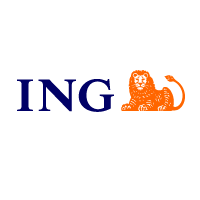Chronic insomnia is emerging as a widespread health challenge, affecting productivity, emotional balance, and overall quality of life. Irregular routines, poor dietary habits, and high stress levels have created this “silent crisis”, says Dr…
Blog
-

Positive PIVOT-PO phase III data show tebipenem HBr’s potential as the first oral carbapenem antibiotic for patients with complicated urinary tract infections (cUTIs)
- Data presented at IDWeek 2025 after study stopped early for efficacy
- Primary endpoint met, demonstrating non-inferiority of oral tebipenem HBr compared to intravenous treatment1
- A new oral option may reduce the need for cUTI treatment in hospital setting
- Data will be shared with regulatory authorities to support regulatory filings
GSK plc (LSE/NYSE: GSK) and Spero Therapeutics (Nasdaq: SPRO) today announced full results of the positive pivotal phase III PIVOT-PO trial evaluating tebipenem HBr, an investigational oral treatment for complicated urinary tract infections (cUTIs), including pyelonephritis (NCT06059846). These results were presented on 20 October 2025 in a late-breaking oral abstract session at ID Week 2025 in Atlanta, USA.
Complicated UTIs represent an important health issue, with an estimated 2.9 million cases treated annually in the US alone.2 These infections are often caused by multidrug-resistant pathogens3 and carry serious risks including organ failure, sepsis, and even death.3-5 They also result in significant emergency department visits and hospitalisations, contributing to over $6 billion per year in healthcare costs.6 Current standard of care includes carbapenem antibiotics in cases of sepsis or resistance to other antibiotics but they are only available for intravenous administration typically occurring in hospital setting.7,8
The trial, which was stopped early for efficacy in May, demonstrated non-inferiority of tebipenem HBr compared to intravenous imipenem-cilastatin in hospitalised patients with cUTI, including pyelonephritis, based on the overall response (composite of clinical cure plus microbiological eradication of the bacteria causing the infection) at the test of cure visit. Tebipenem HBr (oral, 600 mg) achieved a 58.5% overall success rate (261/446 participants) compared to 60.2% overall success rate (291/483 participants) for imipenem-cilastatin (intravenous, 500 mg) (adjusted treatment difference: −1.3%; 95% CI: −7.5%, 4.8%). The safety profile of tebipenem HBr was generally similar to that of imipenem-cilastatin and other carbapenem antibiotics. The most frequently reported adverse events (in ≥3% of patients who received tebipenem HBr) were diarrhea and headache; these events were all mild or moderate and non-serious.
Tony Wood, Chief Scientific Officer, GSK, said: “Complicated UTIs can have serious consequences for patients, including organ failure and sepsis, and oral options for drug-resistant infections are limited. These ground-breaking data show for the first time that cUTIs, including pyelonephritis, can be treated with an oral carbapenem antibiotic as effectively as with an intravenous one. We have a long-standing commitment to delivering novel anti-infectives and are delighted to offer the potential of tebipenem HBr as an effective oral alternative that could be taken at home”.
Esther Rajavelu, Chief Executive Officer, Spero Therapeutics, said: “These data presented at IDWeek represent the culmination of years of dedicated work by our team in close collaboration with GSK. We are deeply grateful to the physicians, researchers, support staff, and, most importantly, to the patients who made this study, and the ones before it, possible. Along with GSK, we are now focused on advancing tebipenem HBr toward FDA submission and bringing this important therapy to patients in need.”
Dr George Sakoulas, Adjunct Professor Department of Pediatrics, UCSD School of Medicine and Chief Infectious Diseases Sharp Rees Stealy Medical Group, commented: “Increasing antibiotic resistance among community-acquired bacteria that cause cUTIs is greatly amplifying the burden of treatment for patients, clinicians, and payers. The therapeutic flexibility of a new oral antibiotic may reduce the need for intravenous antibiotics to treat cUTI, providing benefit to patients and improving treatment options.”
Secondary endpoints also show:
- Clinical cure (i.e. absence of symptoms) rates at test of cure visit were 93.5% in the tebipenem HBr group (417/446) compared to 95.2% in the imipenem-cilastatin group (460/483) with adjusted treatment difference: −1.6% (95% CI: −4.7%, 1.4%)
- Microbiological response rates at test of cure visit were 60.3% in the tebipenem HBr group (269/446) compared to 61.3% in the imipenem-cilastatin group (296/483) with adjusted treatment difference: −0.8% (95% CI: −6.9%, 5.3%)
- Overall, clinical and microbiological response rates at test of cure in participants with infections caused by antimicrobial-resistant Enterobacterales were consistent with the respective response rates in the primary analysis population.
GSK plans to work with US regulatory authorities to include the data as part of a filing in Q4 2025. If approved, tebipenem HBr would be the first oral carbapenem antibiotic in the US for patients who suffer from cUTIs, adding to GSK’s growing anti-infectives portfolio and helping address the challenges of antimicrobial resistance (AMR).
The development of tebipenem HBr is supported in part with federal funds from the U.S. Department of Health and Human Services; Administration for Strategic Preparedness and Response; Biomedical Advanced Research and Development Authority (BARDA), under contract number HHSO100201800015C.
About tebipenem HBr
Tebipenem pivoxil as hydrobromide salt (Tebipenem HBr) is a late-stage development asset developed in collaboration with Spero Therapeutics. Tebipenem HBr is being developed to treat cUTIs, including pyelonephritis. In September 2022, GSK entered into an exclusive license agreement with Spero Therapeutics for the development and commercialisation of tebipenem HBr in all markets, except certain Asian territories. Under this agreement GSK has sub-licensed back to Spero Therapeutics the rights and responsibility to conduct certain development work including the PIVOT-PO Phase III study, after which sponsorship of the new drug application (NDA) will be transferred to GSK from Spero Therapeutics. Tebipenem HBr has received Qualified Infectious Disease Product (QIDP) and Fast Track designations from the US FDA.
About the PIVOT-PO trial
PIVOT-PO was a global, randomised, double-blind, pivotal, non-inferiority (NI margin: -10%) Phase III clinical trial of oral tebipenem HBr compared to IV imipenem-cilastatin, in hospitalised adult patients with cUTI including pyelonephritis. Patients were randomised 1:1 to receive tebipenem pivoxil (600 mg) orally every six hours, or imipenem-cilastatin (500 mg) IV every six hours, for a total of seven to ten days. Matching placebos were used to maintain blinding. The primary efficacy endpoint was overall response (composite of clinical cure plus microbiological eradication) at the test-of-cure visit (about 17 days from first dose administration of study drug) in patients with qualifying pathogens susceptible to imipenem. The trial enrolled a total of 1,690 patients, with randomisation stratified by age, baseline diagnosis (cUTI or pyelonephritis), and the presence or absence of urinary tract instrumentation. For further details on the trial, refer to clinicaltrials.gov identifier NCT06059846.
About complicated urinary tract infections (cUTIs)
cUTIs are broadly described as any UTI that carries an increased risk of morbidity and mortality.3 Definitions of cUTIs are not currently uniform among international societies and regulatory agencies.5, 9 cUTIs encompass a heterogeneous patient population due to the wide range of host factors, comorbidities and urological abnormalities associated with cUTIs.5, 9 Risk factors for cUTI include indwelling catheters, ureteric stents, neurogenic bladder, obstructive uropathy, urinary retention, urinary diversion, kidney stones, diabetes mellitus, immune deficiency, urinary tract modification, and UTIs in renal transplant patients.3, 10-13
GSK in infectious diseases
GSK has pioneered innovation in infectious diseases for over 70 years, and the Company’s pipeline of medicines and vaccines is one of the largest and most diverse in the industry, with a goal of developing preventive and therapeutic treatments for multiple disease areas or diseases with high unmet needs globally. Our expertise and capabilities in infectious disease strongly position us to help prevent and treat disease, and potentially mitigate the challenge of antimicrobial resistance (AMR).
About Spero Therapeutics
Spero Therapeutics, headquartered in Cambridge, Massachusetts, is a clinical-stage biopharmaceutical company focused on identifying and developing novel treatments for rare diseases and multi-drug resistant (MDR) bacterial infections with high unmet need. For more information, visit www.sperotherapeutics.com
About GSK
GSK is a global biopharma company with a purpose to unite science, technology, and talent to get ahead of disease together. Find out more at gsk.com.
Cautionary statement regarding forward-looking statements
GSK cautions investors that any forward-looking statements or projections made by GSK, including those made in this announcement, are subject to risks and uncertainties that may cause actual results to differ materially from those projected. Such factors include, but are not limited to, those described in the “Risk Factors” section in GSK’s Annual Report on Form 20-F for 2024, and GSK’s Q2 Results for 2025.
References
- Hong D. et al, Oral Tebipenem Pivoxil Hydrobromide vs Intravenous Imipenem-Cilastatin in Patients with Complicated Urinary Tract Infections or Acute Pyelonephritis: Efficacy and Safety Results from the Phase 3 PIVOT-PO study, Oral presentation at ID Week 2025, 20 October 2025.
- Carreno JJ, et al. Longitudinal, Nationwide, Cohort Study to Assess Incidence, Outcomes, and Costs Associated With Complicated Urinary Tract Infection. Open Forum Infect Dis. 2019;6:ofz446.
- Sabih A, Leslie SW. Complicated urinary tract infections. In: StatPearls. 2023. StatPearls Publishing: Treasure Island, FL, USA.
- Vallejo-Torres L, et al. Cost of hospitalised patients due to complicated urinary tract infections: a retrospective observational study in countries with high prevalence of multidrug-resistant Gram-negative bacteria: the COMBACTE-MAGNET, RESCUING study. BMJ Open. 2018;8:e020251.
- Marantidis J, Sussman RD. Unmet Needs in Complicated Urinary Tract Infections: Challenges, Recommendations, and Emerging Treatment Pathways. Infect Drug Resist. 2023:16:1391-1405.
- Lodise TP, et al. Hospital admission patterns of adult patients with complicated urinary tract infections who present to the hospital by disease acuity and comorbid conditions: How many admissions are potentially avoidable? Am J Infect Control. 2021;49(12):1528-1534.
- Cotroneo, N., et al. In Vitro and In Vivo Characterization of Tebipenem, an Oral Carbapenem. Antimicrobial agents and chemotherapy. 2020. 64(8), e02240-19.
- Maeda M, et al. Efficacy of carbapenems versus alternative antimicrobials for treating complicated urinary tract infections caused by antimicrobial-resistant Gram-negative bacteria: protocol for a systematic review and meta-analysis. BMJ Open. 2023 Apr 21;13(4):e069166.
- Fernandez MM, et al. Poster presented at ESCMID Global, 27–30 April 2024, Barcelona, Spain. Poster P1023.
- Bonkat G, et al. Keep it Simple: A Proposal for a New Definition of Uncomplicated and Complicated Urinary Tract Infections from the EAU Urological Infections Guidelines Panel. Eur Urol. 2024;86(3):195-197.
- Wagenlehner FME, et al. Epidemiology, definition and treatment of complicated urinary tract infections. Nat Rev Urol. 2020;17(10):586-600.
- Gomila A, et al. Predictive factors for multidrug-resistant gram-negative bacteria among hospitalised patients with complicated urinary tract infections. Antimicrob Resist Infect Control. 2018;7:111.
- Altunal N, et al. Ureteral stent infections: a prospective study. Braz J Infect Dis. 2017;21(3):361-364.
Continue Reading
-

Progress on share buyback programme
Amsterdam,
ING announced today that, as part of our €2.0 billion share buyback programme announced on 2 May 2025, in total 4,381,000 shares were repurchased during the week of 13 October 2025 up to and including 17 October 2025.
The shares were repurchased at an average price of €20.91 for a total amount of €91,614,268.60. For detailed information on the daily repurchased shares, individual share purchase transactions and weekly reports, see share buy back programme.
.
In line with the purpose of the programme to reduce the share capital of ING, the total number of shares repurchased under this programme to date is 96,504,891 at an average price of €19.72 for a total consideration of €1,903,541,763.32. To date approximately 95.18% of the maximum total value of the share buyback programme has been completed.Note for editors
More on investor information, go to the investor relations section on this site.
For news updates, go to the newsroom on this site or via X (@ING_news feed).
For ING photos such as board members, buildings, go to Flickr.
ING PROFILE
ING is a global financial institution with a strong European base, offering banking services through its operating company ING Bank. The purpose of ING Bank is: empowering people to stay a step ahead in life and in business. ING Bank’s more than 60,000 employees offer retail and wholesale banking services to customers in over 100 countries.
ING Group shares are listed on the exchanges of Amsterdam (INGA NA, INGA.AS), Brussels and on the New York Stock Exchange (ADRs: ING US, ING.N).
ING aims to put sustainability at the heart of what we do. Our policies and actions are assessed by independent research and ratings providers, which give updates on them annually. ING’s ESG rating by MSCI was reconfirmed by MSCI as ‘AA’ in August 2024 for the fifth year. As of December 2023, in Sustainalytics’ view, ING’s management of ESG material risk is ‘Strong’. Our current ESG Risk Rating, is 17.2 (Low Risk). ING Group shares are also included in major sustainability and ESG index products of leading providers. Here are some examples: Euronext, STOXX, Morningstar and FTSE Russell. Society is transitioning to a low-carbon economy. So are our clients, and so is ING. We finance a lot of sustainable activities, but we still finance more that’s not. Follow our progress on ing.com/climate.
Important legal information
Elements of this press release contain or may contain information about ING Groep N.V. and/ or ING Bank N.V. within the meaning of Article 7(1) to (4) of EU Regulation No 596/2014 (‘Market Abuse Regulation’).
ING Group’s annual accounts are prepared in accordance with International Financial Reporting Standards as adopted by the European Union (‘IFRS- EU’). In preparing the financial information in this document, except as described otherwise, the same accounting principles are applied as in the 2024 ING Group consolidated annual accounts. All figures in this document are unaudited. Small differences are possible in the tables due to rounding.
Certain of the statements contained herein are not historical facts, including, without limitation, certain statements made of future expectations and other forward-looking statements that are based on management’s current views and assumptions and involve known and unknown risks and uncertainties that could cause actual results, performance or events to differ materially from those expressed or implied in such statements. Actual results, performance or events may differ materially from those in such statements due to a number of factors, including, without limitation: (1) changes in general economic conditions and customer behaviour, in particular economic conditions in ING’s core markets, including changes affecting currency exchange rates and the regional and global economic impact of the invasion of Russia into Ukraine and related international response measures (2) changes affecting interest rate levels (3) any default of a major market participant and related market disruption (4) changes in performance of financial markets, including in Europe and developing markets (5) fiscal uncertainty in Europe and the United States (6) discontinuation of or changes in ‘benchmark’ indices (7) inflation and deflation in our principal markets (8) changes in conditions in the credit and capital markets generally, including changes in borrower and counterparty creditworthiness (9) failures of banks falling under the scope of state compensation schemes (10) non- compliance with or changes in laws and regulations, including those concerning financial services, financial economic crimes and tax laws, and the interpretation and application thereof (11) geopolitical risks, political instabilities and policies and actions of governmental and regulatory authorities, including in connection with the invasion of Russia into Ukraine and the related international response measures (12) legal and regulatory risks in certain countries with less developed legal and regulatory frameworks (13) prudential supervision and regulations, including in relation to stress tests and regulatory restrictions on dividends and distributions (also among members of the group) (14) ING’s ability to meet minimum capital and other prudential regulatory requirements (15) changes in regulation of US commodities and derivatives businesses of ING and its customers (16) application of bank recovery and resolution regimes, including write down and conversion powers in relation to our securities (17) outcome of current and future litigation, enforcement proceedings, investigations or other regulatory actions, including claims by customers or stakeholders who feel misled or treated unfairly, and other conduct issues (18) changes in tax laws and regulations and risks of non-compliance or investigation in connection with tax laws, including FATCA (19) operational and IT risks, such as system disruptions or failures, breaches of security, cyber-attacks, human error, changes in operational practices or inadequate controls including in respect of third parties with which we do business and including any risks as a result of incomplete, inaccurate, or otherwise flawed outputs from the algorithms and data sets utilized in artificial intelligence (20) risks and challenges related to cybercrime including the effects of cyberattacks and changes in legislation and regulation related to cybersecurity and data privacy, including such risks and challenges as a consequence of the use of emerging technologies, such as advanced forms of artificial intelligence and quantum computing (21) changes in general competitive factors, including ability to increase or maintain market share (22) inability to protect our intellectual property and infringement claims by third parties (23) inability of counterparties to meet financial obligations or ability to enforce rights against such counterparties (24) changes in credit ratings (25) business, operational, regulatory, reputation, transition and other risks and challenges in connection with climate change, diversity, equity and inclusion and other ESG-related matters, including data gathering and reporting and also including managing the conflicting laws and requirements of governments, regulators and authorities with respect to these topics (26) inability to attract and retain key personnel (27) future liabilities under defined benefit retirement plans (28) failure to manage business risks, including in connection with use of models, use of derivatives, or maintaining appropriate policies and guidelines (29) changes in capital and credit markets, including interbank funding, as well as customer deposits, which provide the liquidity and capital required to fund our operations, and (30) the other risks and uncertainties detailed in the most recent annual report of ING Groep N.V. (including the Risk Factors contained therein) and ING’s more recent disclosures, including press releases, which are available on www.ING.com.
This document may contain ESG-related material that has been prepared by ING on the basis of publicly available information, internally developed data and other third-party sources believed to be reliable. ING has not sought to independently verify information obtained from public and third-party sources and makes no representations or warranties as to accuracy, completeness, reasonableness or reliability of such information.
Materiality, as used in the context of ESG, is distinct from, and should not be confused with, such term as defined in the Market Abuse Regulation or as defined for Securities and Exchange Commission (‘SEC’) reporting purposes. Any issues identified as material for purposes of ESG in this document are therefore not necessarily material as defined in the Market Abuse Regulation or for SEC reporting purposes. In addition, there is currently no single, globally recognized set of accepted definitions in assessing whether activities are “green” or “sustainable.” Without limiting any of the statements contained herein, we make no representation or warranty as to whether any of our securities constitutes a green or sustainable security or conforms to present or future investor expectations or objectives for green or sustainable investing. For information on characteristics of a security, use of proceeds, a description of applicable project(s) and/or any other relevant information, please reference the offering documents for such security.This document may contain inactive textual addresses to internet websites operated by us and third parties. Reference to such websites is made for information purposes only, and information found at such websites is not incorporated by reference into this document. ING does not make any representation or warranty with respect to the accuracy or completeness of, or take any responsibility for, any information found at any websites operated by third parties. ING specifically disclaims any liability with respect to any information found at websites operated by third parties. ING cannot guarantee that websites operated by third parties remain available following the publication of this document, or that any information found at such websites will not change following the filing of this document. Many of those factors are beyond ING’s control.
Any forward-looking statements made by or on behalf of ING speak only as of the date they are made, and ING assumes no obligation to publicly update or revise any forward-looking statements, whether as a result of new information or for any other reason.
This document does not constitute an offer to sell, or a solicitation of an offer to purchase, any securities in the United States or any other jurisdiction.
Continue Reading
-

New-look finals weekend: AO 2026 provisional schedule released
It’s one of many special days on the Week 1 calendar; there’s also Emirates Day (20 January), Hot Shots Day (22 January) – on which the AO Ballpark comes alive with mini courts, games, and activities for kids of all ages – and Kia Sunday…
Continue Reading
-

96% accurate blood test for ME developed
Scientists at the University of East Anglia and Oxford Biodynamics have developed a blood test to diagnose chronic fatigue syndrome which is 96% accurate.
Scientists at the University of East Anglia and Oxford Biodynamics have developed a…
Continue Reading
-

European AI rising star Nexos.ai raises $30M to unlock enterprise AI adoption
For most enterprise companies, AI is either a promise that has yet to deliver or a security risk. The effort of Lithuania’s most famous entrepreneur duo to solve that conundrum has garnered attention — and funding.
Just months after
Continue Reading
-

Diablo review – Scott Adkins enters Cormac McCarthy territory in over-the-border revenge thriller | Film
No Country for Old Men’s Anton Chigurh was the scariest thing to come out of Latin America since Argentinian inflation. So it’s taken a surprisingly long time to see a direct imitator: the dark-clad avenger El Corvo, played here by Marko…
Continue Reading
-

Master at work: on set with celebrated British film director Terence Davies – in pictures | Film
Distant Voices, Still Lives (1988)
Terence Davies, centre, directs Freda Dowie on the set of Distant Voices, Still Lives, a fictionalised memoir of his childhood in wartime Liverpool. Ben Roberts, the British Film Institute’s chief executive,…
Continue Reading
-

Sanae Takaichi wins historic vote to become Japan’s first female prime minister
Takaichi’s election shows what is possible for Japanese girls to achievepublished at 05:58 BST
Mariko Oi
Presenter, Asia Specific podcast Image source, Reuters
Image source, ReutersWhile many of Japan’s feminists may not be celebrating the country’s
first…Continue Reading
-

Localized Cutaneous Talaromyces marneffei Infection in an Immunocompet
Yue Chen,* Xiaodong Li,* Chao Bi, Yan Yang, Siying Xiong, Xin Tian, Daoqing Zhong, Yichuan Gan, Aili Gao
Department of Dermatology, Guangzhou Dermatology Hospital, Guangzhou, Guangdong, People’s Republic of China
Correspondence: Aili…
Continue Reading
